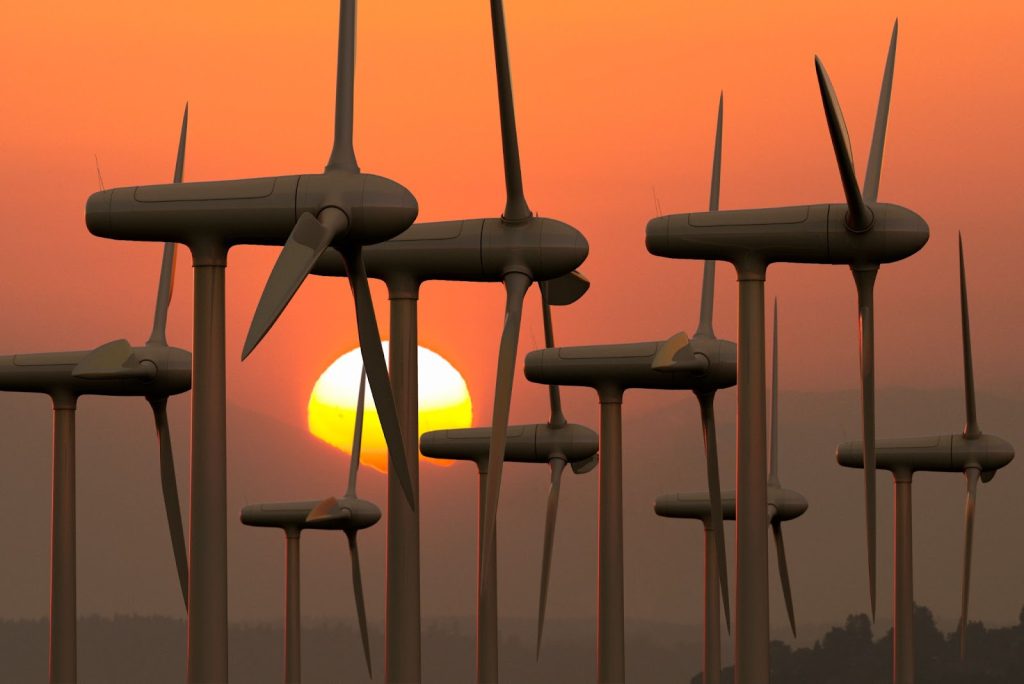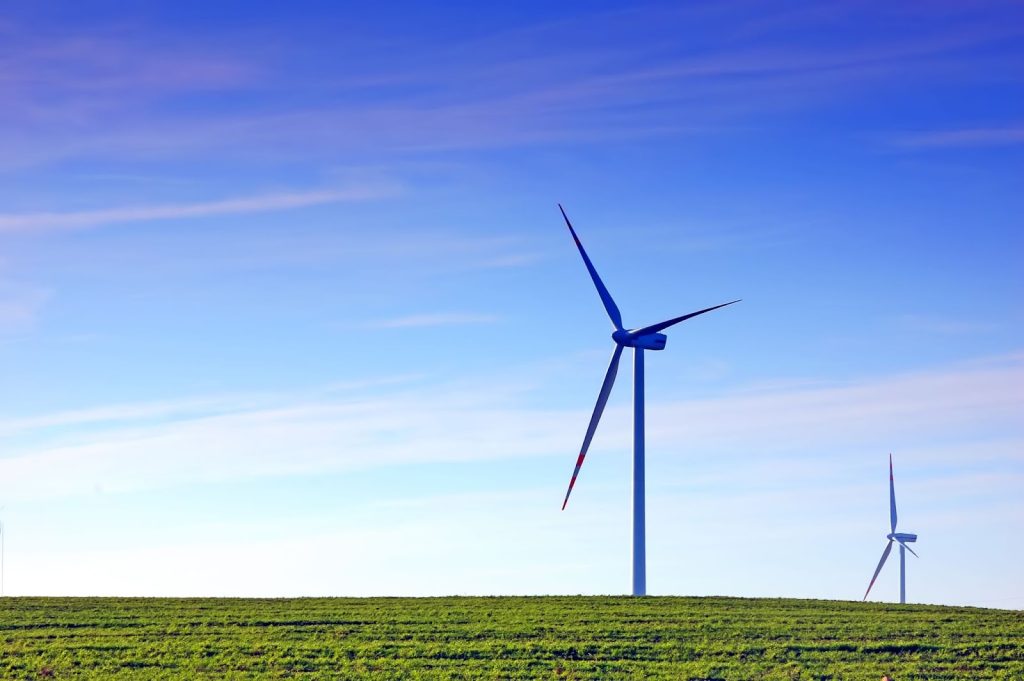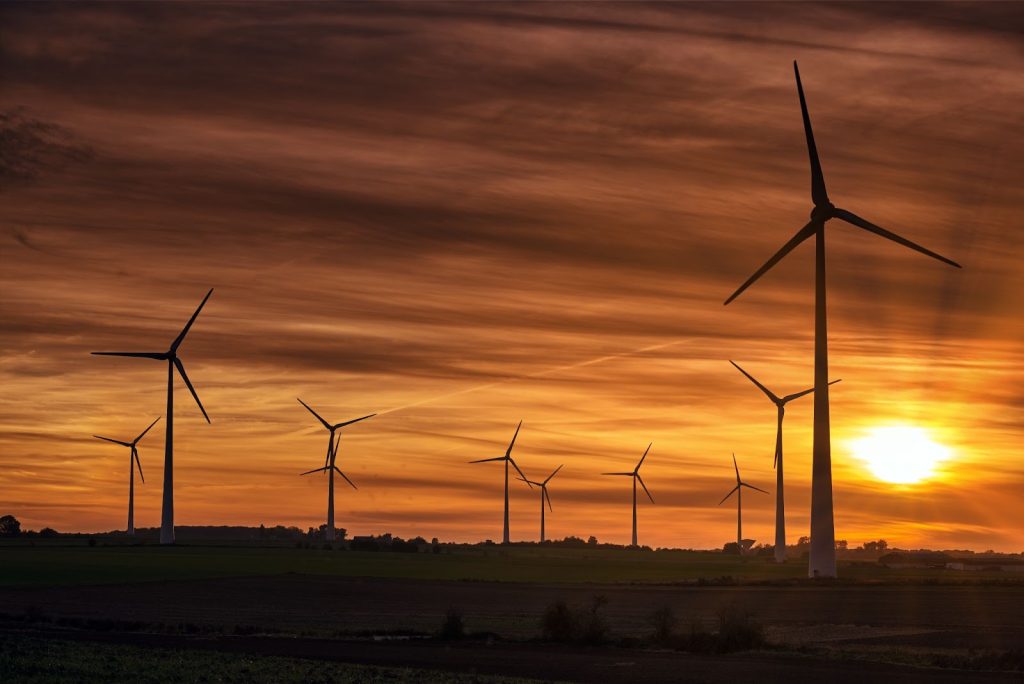How Do Wind Turbines Generate Electricity?
Key Highlights:
- Wind turbines transform kinetic energy into electrical power using aerodynamic blades, gearboxes, and generators, without emitting greenhouse gases.
- Blades capture wind energy, spinning a rotor connected to a low-speed shaft, which transfers mechanical energy to a generator via a gearbox.
- Two main turbine designs, Horizontal-Axis (HAWTs) and Vertical-Axis (VAWTs)—are optimised for different locations and wind conditions.
- Performance depends on four major factors: wind speed, blade length, turbine height, and site location.
- Wind energy is clean, renewable, and scalable, playing a crucial role in reducing carbon emissions and enhancing global energy security.
- Modern wind turbines can power up to 1,500 homes, and their integration with other renewable sources enhances reliability.
- Careful planning ensures low noise and minimal environmental impact, addressing common concerns about wildlife and community disruption.

A Beginner-Friendly Guide for Tomorrow’s Wind Energy Experts
As climate change accelerates and global energy demand rises, wind energy stands out as one of the most promising and practical solutions for a sustainable future. But how do those tall, elegant structures, wind turbines, harness the wind and turn it into usable electricity?
If you’re taking your first steps into the world of renewable energy or exploring educational programs like DADB’s Wind Power course, this guide is the perfect foundation to help you understand the core mechanics and significance of wind power generation.
What Exactly Is a Wind Turbine?

And why is it more than just a giant fan?
At first glance, a wind turbine might look like a futuristic sculpture with rotating blades. But it’s a highly engineered machine designed to capture wind and convert it into electric power. Simply put, a wind turbine is a system that transforms the kinetic energy (movement) of wind into mechanical energy, which is then converted into electrical energy through a generator.
Unlike traditional power plants that burn fossil fuels, wind turbines don’t emit greenhouse gases during operation, making them a cornerstone of the clean energy transition.
Step-by-Step: How Wind Becomes Electricity

From gusts of wind to lighting up your home
Understanding the inner workings of a wind turbine gives you a front-row seat to one of the most efficient uses of natural forces. Here’s how it all works:
1. Wind Turns the Blades – The Energy Capture Stage
When wind flows over the specially designed blades of a wind turbine, it creates aerodynamic lift, much like an aeroplane wing. This lift causes the blades to spin around a central hub. The efficiency of this step depends on the blade design, material, and wind speed—factors that engineers continually refine.
2. The Rotor Transfers Motion to the Shaft
The rotating blades are connected to a hub, forming what’s called the rotor. This rotor is attached to a low-speed shaft, which begins to turn as the blades spin. This is the point where mechanical energy is first harnessed from the wind.
3. The Gearbox Gives the System a Boost
The rotational speed at this stage is too low to generate electricity efficiently, so the low-speed shaft connects to a gearbox that multiplies the rotation, often increasing it by more than 50 times. This results in a high-speed shaft spinning at around 1,500 revolutions per minute (RPM), which is ideal for generating electricity.
4. The Generator Creates Electric Power
Once the high-speed shaft is spinning, it drives the generator, which uses the principles of electromagnetic induction, converting mechanical movement into electrical current. This is the heart of electricity generation in a wind turbine.
5. Electricity Is Prepared for the Grid
The electricity generated is then sent through a transformer located either within or near the turbine. The transformer increases the voltage so that the electricity can be transmitted efficiently over long distances via the power grid, eventually powering homes, industries, and infrastructure.
The Two Main Wind Turbine Types Explained
Why design matters in wind energy efficiency
There are two key designs in the world of wind turbines:
- Horizontal-Axis Wind Turbines (HAWTs): These are the most common and recognisable types, with blades that spin around a horizontal axis. They are typically installed in onshore and offshore wind farms where wind flow is predictable.
- Vertical-Axis Wind Turbines (VAWTs): These turbines spin around a vertical axis and are often used in urban areas or constrained spaces. While less efficient than HAWTs in open areas, they perform better in turbulent wind conditions.
Understanding the pros and cons of each design is vital for anyone involved in site planning, wind resource assessment, or turbine technology development.
What Affects How Much Electricity a Turbine Can Generate?
The four key ingredients for optimal performance
Wind turbine output is not just about spinning blades—it’s a complex interaction of multiple factors:
- Wind Speed: The most critical factor. Electricity generation increases exponentially with wind speed, meaning a small increase in wind can result in a large jump in power.
- Blade Length (Swept Area): Longer blades capture more wind, generating more energy. That’s why modern wind turbines are growing taller and wider.
- Turbine Height: Higher turbines can tap into faster, steadier winds at greater altitudes, boosting both energy yield and consistency.
- Location and Siting: Wind turbines perform best in areas with strong, consistent wind patterns, such as coastal regions, open plains, and hilltops. Site assessment includes wind mapping, environmental impact studies, and accessibility evaluations.
Why Wind Energy Is Crucial for the Planet

Cleaner air, greener jobs, and a more resilient future
Choosing wind energy isn’t just a technical decision, it’s an ethical and environmental one. Here’s why wind power matters more than ever:
- Zero Emissions: Wind turbines generate electricity without releasing carbon dioxide, helping fight climate change.
- Infinite Resource: Wind is renewable, meaning we’ll never run out of it, unlike coal, oil, or gas.
- Energy Security: Countries investing in wind reduce their dependence on imported fuels, improving energy independence.
- Job Creation: The wind energy sector is creating thousands of green jobs, from manufacturing and installation to maintenance and engineering.
Frequently Asked Questions
Clearing up common doubts for curious minds
Q: How much electricity does one turbine produce?
A: Modern utility-scale wind turbines typically produce 2–5 megawatts (MW), enough to power up to 1,500 homes, depending on wind conditions.
Q: What happens when the wind doesn’t blow?
A: Turbines have a cut-in speed (usually around 3 m/s) and a cut-out speed (around 25 m/s). Below or above these speeds, they shut down. This is why wind energy is often supported by energy storage or combined with solar power for reliability.
Q: Are wind turbines noisy or harmful to wildlife?
A: Modern turbines are engineered for low noise, and responsible project planning includes environmental impact assessments to minimise harm to birds, bats, and ecosystems.
Your Next Step: Go from Curious to Career-Ready
Where learning meets global energy solutions
Understanding how wind turbines generate electricity is just the tip of the iceberg. If you’re passionate about contributing to the renewable energy revolution, consider joining a structured learning program that builds both knowledge and employable skills.
DADB’s Wind Power course is designed by industry experts in Germany and localised for a global audience. Through interactive videos, practical simulations, and real-world case studies, you’ll gain:
- In-depth understanding of wind turbine components and systems
- Knowledge of wind farm planning and maintenance
- Insights into grid integration, energy policies, and future trends in wind power
Source:
https://www.energy.gov/eere/wind/explore-wind-turbine
https://www.eia.gov/energyexplained/wind/electricity-generation-from-wind.php
https://kirkwood.pressbooks.pub/windenergy/chapter/chapter-3-hawt-vs-vawt/
https://energyfollower.com/types-of-wind-turbines/
https://energyeducation.ca/encyclopedia/Wind_power
https://www.energy.gov/eere/articles/wind-turbines-bigger-better
https://www.energy.gov/eere/wind/advantages-and-challenges-wind-energy
https://www.acciona.com/renewable-energy/wind-energy
https://windexchange.energy.gov/what-is-wind
https://www.enelgreenpower.com/learning-hub/renewable-energies/wind-energy/wind-turbine

